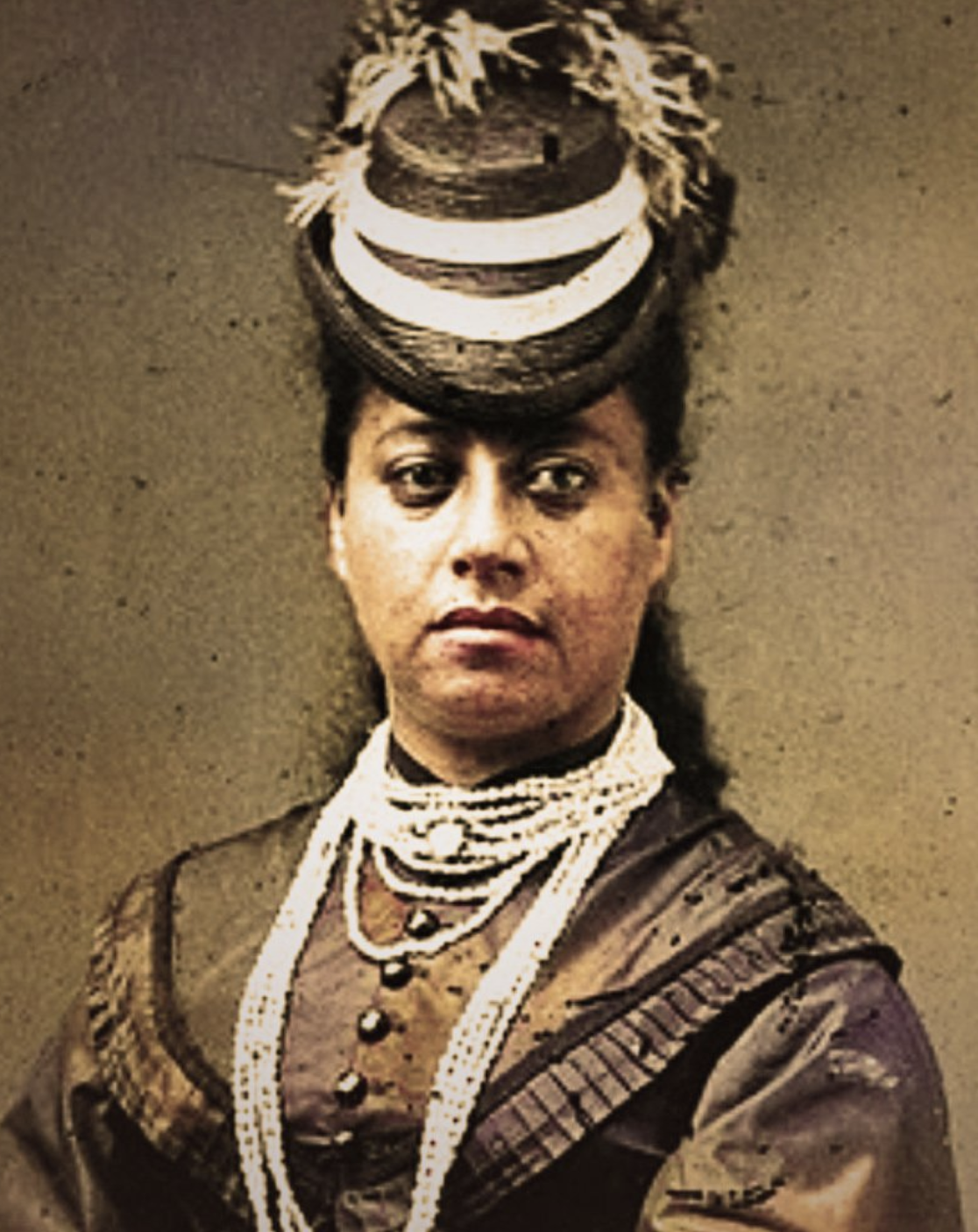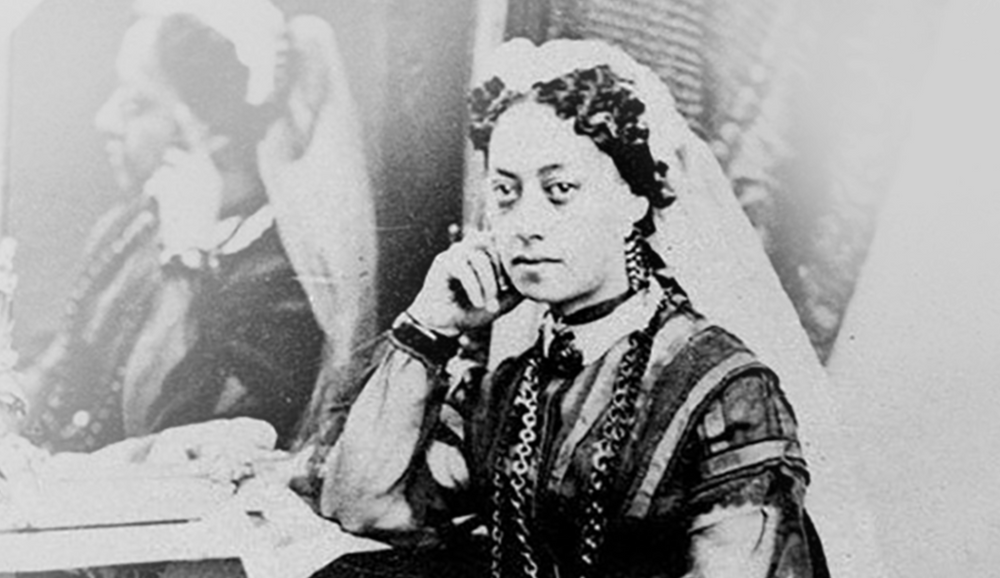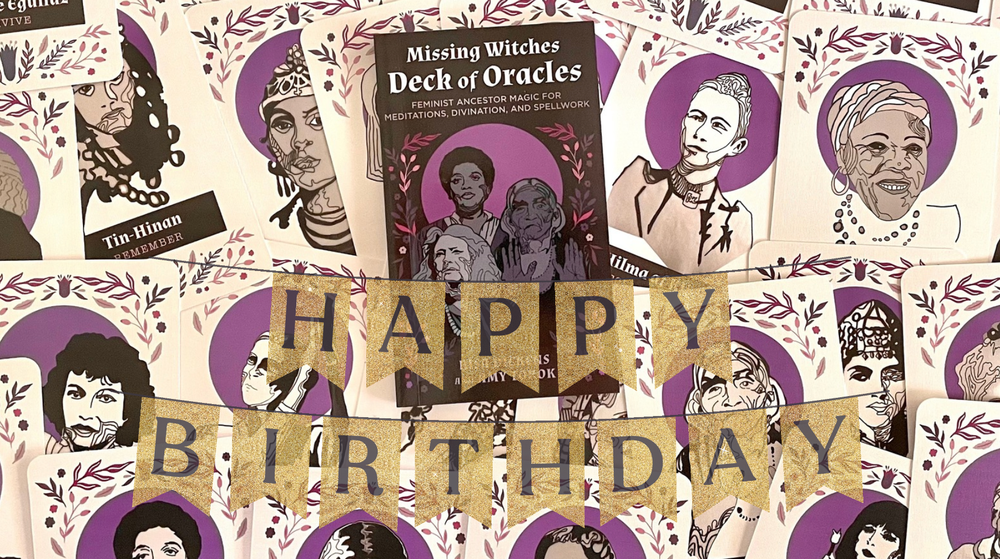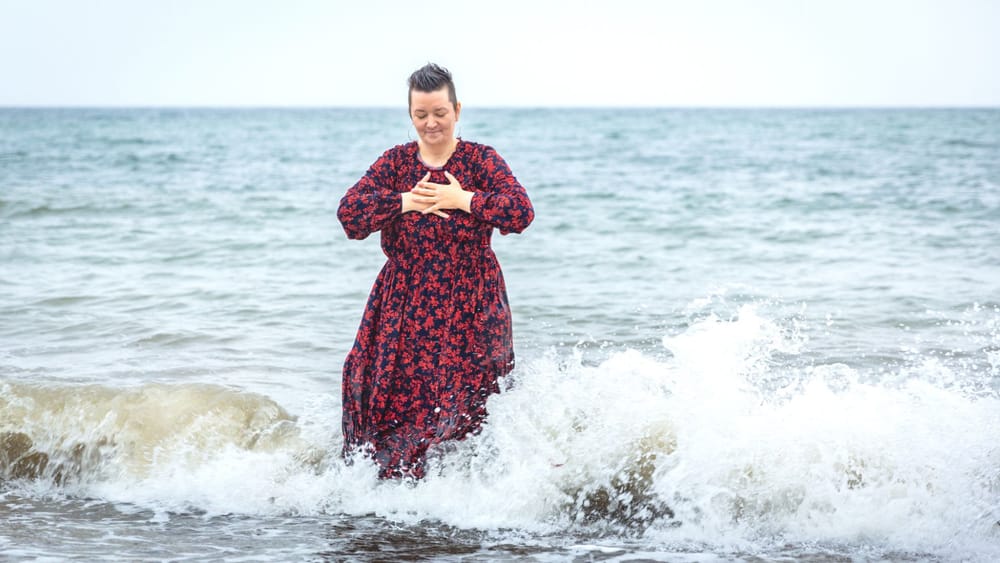In today's scripted episode, Amy learns about Mary Ellen Pleasant, called the mother of San Francisco civil rights and a one-woman social agency.
When the census taker passed through town for the United States Census of 1890, Mary Ellen Pleasant declared herself a “capitalist by profession” using every trick in her toolbox to amass a fortune that some estimate to have been worth thirty million dollars (in today’s money) at its peak. By some, she’s been lumped in with the “robber barons” of the San Francisco gold rush.
So maybe right now you're asking yourself, “What is a self-declared capitalist like Mary Ellen Pleasant doing in the Missing Witches pantheon - this group of magical beings who use their powers to try and make the world a better place?”
Well, what if I told you that Mary Ellen Pleasant used her wealth to support her community, to support the fight for abolition and women’s suffrage? And what if I told you that she studied under the New Orleans Queen of Voodoo herself, Marie Laveaux? And what if I told you that these two facts are inexorably linked?
In Pleasant’s own unpublished memoir, she summed up her legacy:
“You know my cause well. My cause was the cause of freedom and equality for myself and for my people and I’d rather be a corpse than a coward.”
LISTEN NOW, TRANSCRIPT BELOW
You know my cause well. My cause was the cause of freedom and equality for myself and for my people and I’d rather be a corpse than a coward.
Mary Ellen Pleasant

TRANSCRIPT
“I’d Rather Be a Corpse Than a Coward”
When the census taker passed through town for the United States Census of 1890, Mary Ellen Pleasant declared herself a “capitalist by profession” using every trick in her toolbox to amass a fortune that some estimate to have been worth thirty million dollars (in today’s money) at its peak. By some, she’s been lumped in with the “robber barons” of the San Francisco gold rush.
So maybe right now you're asking yourself, “What is a self-declared capitalist like Mary Ellen Pleasant doing in the Missing Witches pantheon - this group of magical beings who use their powers to try and make the world a better place?”
Well, what if I told you that Mary Ellen Pleasant used her wealth to support her community, to support the fight for abolition and women’s suffrage? And what if I told you that she studied under the New Orleans Queen of Voodoo herself, Marie Laveaux? And what if I told you that these two facts are inexorably linked?
In Pleasant’s own unpublished memoir, she summed up her legacy:
“You know my cause well. My cause was the cause of freedom and equality for myself and for my people and I’d rather be a corpse than a coward.” 4
Suddenly, we find ourselves painting a different picture of Mary Ellen Pleasant than those who used their own toolbox of tricks to destroy her, discredit her: racsim, fear-mongering, and pointed jealousy. So we welcome Mary Ellen Pleasant into this coven, to shield her from a bad reputation that she only half deserved, and place her among those from whom we can take lessons as we strive to resist late-stage capitalism, take up the battle for freedom, and re-enchant the world.
Mary navigated a world that was hostile to her very existence, and her life was a testament to the power of determination and the unwavering belief that one person can make a difference.
(HoP pg 155) Mary said, “They paid the newspapers to malign and to vilify me and to blacken my character, but I did not reply to their assaults because I had staunch supports in the City and, so long as they supported me, I did not care one snap of one little finger for public opinion.”
And this is perhaps true for our Missing Witches Coven too. We have each other’s support, and as long as we support each other, we don’t have to care one snap about the opinion of a muggle public who doesn’t get it.
See I grew up under a different model of industry than the one I see today. I was born in a blue collar factory town where General Motors ran plants and production lines for the automotive industry, and almost all of my male relatives worked there. The McLaughlin family loomed large over the city. But this was no dystopian hellscape, in the way that we see industry functioning now. Back then, the unions ensured that GM workers were paid fairly for their labour, and provided good pensions that would see to their care after retirement. And the McLaughln family itself seemed to have a different view of their riches. They weren’t the billionaire tycoons rocketing off to outer space, producing 30 times more CO2 in three minutes than an average car driver produces in a year, then turning around and shaming your average Joe for his carbon footprint. The McLaughlins didn’t hoard their wealth while slowly starving their workers. No, the McLaughlins supported their community. My home town has schools, a beautiful art gallery, a huge library and a museum honoring the history of automotive technology, all paid for by and bearing the McLaughlin name. The lakefront beach remains public access, and funds provided maintain some of the original buildings of the town’s naissance; school groups tour them in history lessons. After patriarch Robert McLaughlin’s death, the mansion that housed them was donated to the town and became yet another museum, a place where I, as a youngster, could wander the grounds and gardens for free. This is the town I grew up in.
All this to say, there is another way. Another way to function where the gap between rich and poor is smaller, less dangerous than it is today. I’ve seen it.
Mary Ellen Pleasant achieved her wealth through luck, genius, hard work, commitment, and yes, a big helping of industrial espionage. But she, like the McLaughlin family of Oshawa Ontario, used her wealth to benefit others rather than to make sure to die with the most toys, with the most buried treasure. She was a survivor, and indeed, much like the reality tv game show, Mary had to outwit, outplay, and outlast to earn AND distribute her riches.
In “Heritage Of Power” (page 164) Susheel Bibbs wrote, “Pleasant’s ability to lead, to fight for liberty, to protect her people and to love across boundaries of race and class without losing sight of her goals was outstanding.”
And much like all the Witches who inhabit this Missing Witches landscape, we can take strength and inspiration from her remarkable achievements, against all odds.
Bibbs wrote (pg 14), “so often, when faced with a challenge, I have gained the courage to act by measuring my challenge against those of Pleasant [...]. Seeing it pale in comparison, I usually say, I can at least do that! And move forward.”
And this is, of course, the thrust of the Missing Witches project. To find the powerful magic-makers, world-changers, and understand that if they can do it, maybe we can too.
I’ll be quoting from Heritage of Power a lot in this episode, because while the existence of a relationship between Mary Ellen Pleasant and Voodoo Queen of New Orleans Marie Laveaux has been hotly contested and debated, Susheel Bibbs’s book puts in the research to divide fact from fiction and present hard evidence of not only their shared time, but their shared values.
Susheel discovered Mary Ellen Pleasant and began her research because she, as a trained opera singer, had been approached about playing Mary on stage, and she wanted to get to know her character. Susheel became enamored and obsessed with Mary Ellen’s story, and eventually wrote her book, Heritage of Power, that traces Mary Ellen’s life and her initiation, under Marie Laveau’s tutelage, into the practice of Vodou. And I find this to be a delightful bit of fate. Who knows what will lead us where. Start by singing opera, and perhaps you’ll write a book that will lead down a path you never imagined for yourself.
(HoP pg 17) “In her first memoir, she reported being the illegitimate child of John H. Pleasants (a Virginia governor’s son) and an enslaved Vodou priestess of St. Domingue, now called Haiti.” (18) But it’s worth noting that “Mary tailored different memoirs at different times to counteract the gossip and criticism leveled against her in the press.” Mary said, “Some say that words are made to reveal feelings; I say that words are made to conceal them.”
(HoP pg 26) Susheel asserts that
“Mary’s mother, as a Haitian Vodou queen, had held a shaman-like position, which mandated healing skills, a knowledge of ritual, and social responsibility for her community (Desmangles, 1992). Mary was to have inherited this priestancy; however, Mary’s mother had been killed for practicing her faith on the plantation (troublemaking) and so could not complete her daughter’s training.”
(HoP pg 119)
“According to her 1880’s scribe, Charlotte Downs, Mary Pleasant had been told of her destiny as a priestess of Vodou by her mother, said to have been a Haitian Vodou queen and the daughter of a queen. Mary would therefore have known that, through family power, she was destined to help her people. “If they rise, I rise” says one version of an old proverb, enjoining daily dedication to community. Well known New Orleans mambo and Yoruba priestess Ava K. Jones said of this, “ Vodou is my religion and my life,” Oungan Elmer Glover concurred (Bibbs interviews 1996). Thus, no matter how far away from the practice of her faith Mary Pleasant went, she could not have left her destiny and Lwa far behind.”
After her mother’s death, the orphaned Mary was forced into indentured servitude. Now, indentured servitude is very much akin to slavery; a person works for no salary in order to repay a debt - this still happens today. LIFE feels like this today. But as usual, Mary was a little bit lucky.
As a child she was, apparently, sent to live with a Quaker family in Nantucket where she worked as a domestic servant and then in a shop. The Hussey family were abolitionists, and there she was treated well, learned the basics of business, showed great skill in memory and math, and developed her powers of salesmanship, fostered by a natural wit and charisma.
“I was a girl full of smartness,” she said, who “let books alone and studied men and women a good deal … I have always noticed that when I have something to say, people listen. They never go to sleep on me.”
But she also wondered who she might have been if she’d been given a formal education.
From Nantucket, she relocated to Boston, where she became involved in abolitionist activities and worked as a dressmaker. After leaving Boston, Mary traveled around and eventually landed in New Orleans where she would meet and study under Marie Laveau.
In Heritage of Power, Susheel Bibbs wrote:
(HoP pg 49)
“My research shows that Marie LaVeaux was a humane and powerful leader—an outspoken healer whose power and charisma not only unified diverse factions of Vodou, but protected it from annihilation through the time of the Civil War. However, that is not the way LaVeaux is usually perceived. Often her detractors describe her work and her religion as an eclectic mix. Certainly she has rarely been acknowledged for the effective, creative model for social change that she built upon her faith and passed (circa 1850) to Mary Ellen Pleasant. My research also shows that the model and her faith were inseparable. [...There is a] continuity of worldview, process, and leadership that, I believe, enabled Vodou to serve as a “heritage of power”--the basis of a model for social leveraging--that Marie LaVeaux could pass to Mary Ellen Pleasant.”
Susheel’s introduction breaks her thesis down to four important points:
(HoP pg 9-10)
“1. that the work of both LaVeaux and Pleasant grew out of social and political necessity 2. that both women, as priests of their indigenous faith, Vodou, worked under mandate from that faith to achieve social change. 3. that, according to research, the Vodou that LaVeaux encountered contained enough continuity and order to be called a religion rather than a cult, hence its far reaching effect in New Orleans and its ability to organize and guide the work of both women. 4. that, having studied with LaVeaux, Pleasant carried LaVeaux’s model for social change, based on priestly mandates of Vodou, to San Francisco where she effected it so successfully that she became known as its “ Mother of Civil Rights.” This means that one woman’s work supported that of the other, although each implemented hers uniquely. It also means that the work of both women was more unified in cause and purpose than most commentators would have us believe.”
We can root our own practices in this history too, reframe our own syncretic spiritualities as intersectional tools for achieving social change. An alchemy of systems of belief, and not just what we believe, but what we do with that belief. Know that we can teach and support each other, even if we implement the ideas differently. Under the great unified and intersectional cause and purpose that we all share - safety, liberation, joy, and for every living being, a voice that can’t be silenced.
In our first book, MIssing Witches, I told the story of how a chance encounter with Cuban Santeria saved my life. I will not forget this favour.
I’ve said before that I don’t learn about voodou to practice it, appropriate it, but rather to reveal how this complex system shatters the white supremecist lie which dismisses African Traditional Religions as chaotic savagery to be feared but not respected. I learn to repay the favour.
(HoP pg 111) Susheel wrote:
“In 1994, Luisah Teish, Ph.D., whose work merges three African-based traditions (African, Cuban, and New Orleanean) responded to a pattern of activity between the work of Marie LaVeaux and Mary Pleasant, which I described to her by saying, “Oh, the LaVeaux Model.” In so doing, she coined a useful phrase. For in comparing Pleasant’s work in San Francisco with that of LaVeaux, I noticed parallels—the same elements being used in the same sequence to the same effect, and so I adopted Teish’s phrase to describe LaVeaux’s key social and political activities. According to Dr. Teish (Teish 1985) and most scholars, Marie, a talented healer, used certain saints as part of her healing/ vodou prescriptions. She also became one of the first to develop the widespread sale of charms and gris-gris amongst the wealthy, the first to popularize her faith at large and to be able to protect it socially and politically. Thus she was the first known to use Vodou in leveraging secrets to force the City’s powerful to aid the powerless—the condemned, the poor, her followers, and others who sought her help.”
Susheel lists some of the commonalities of Mary and Maries work: (pg 109)
************
Mary's first husband was James W. Smith a former plantation owner and committed abolitionist. They married in 1848 in San Francisco. But their marriage was short-lived, as Smith died soon after their wedding, leaving Mary an inheritance that would become the seed for her empire.
She was deeply involved in the women's suffrage movement, recognizing that the fight for women's rights was interconnected with the larger struggle for equality. She understood that the liberation of one marginalized group could not be achieved without the liberation of all. Her dedication to intersectional feminism was ahead of its time and serves as a reminder of the importance of inclusivity in social justice movements.
“Mary was neither prude nor saint—As a mambo, she was creative and did what worked to help her people. She was also a survivor and a woman of the old West.” (HoP pg 135) Mary ran a brothel, sure, but was also known to rescue young women who were doing sex work in the streets, and give them a safe place. I guess she figured, if you’re going to sell sex, let it be for your benefit and not just your survival. Mary trained these women to pay attention to the financial conversations of the rich and use this information in their own wealth building. Mary herself, though she certainly didn’t need the money, worked as a housekeeper and, cloaked in the inherent invisibility of a black servant, gained knowledge to serve her own purpose.
She made history by suing the San Francisco streetcar company in 1866, challenging racial segregation on public transportation. She filed a lawsuit after being forcibly removed from a streetcar due to her race, arguing that the company's policy was discriminatory and violated her rights. Despite facing legal obstacles and a biased legal system, she persisted in her fight for justice. Although she ultimately lost the case, her action laid the groundwork for future challenges to segregation and inspired others to take a stand against racial discrimination.
We can envision Mary as a mystical force, using her connections, intelligence, vodou training and charm to sway wealthy white individuals towards the fight for freedom. Like a witch, she possessed an uncanny ability to navigate the treacherous waters of racial discrimination and wield her power to uplift those in need.
Mary’s financial backing was instrumental in sustaining the work of prominent abolitionists such as Frederick Douglass and John Brown. She understood the importance of funding legal battles against segregation and played an active role in supporting landmark cases that challenged inequality.
Her legacy as an abolitionist financier is a testament to the power of financial resources in effecting social change. Her support laid the groundwork for a more just and equitable society, inspiring future generations to continue the fight for civil rights and equality. We can think of her as a witch of finance, a money witch, whose magic was wielded in service of liberation and justice.
Mary Ellen Pleasant's legacy is one that continues to inspire and empower. Her story serves as a reminder that one person can make a difference, that even in the face of adversity, it is possible to effect change. Her tireless dedication to justice and equality is a testament to the strength of the human spirit and the power of resilience. The importance of what we do with our money. With our religion.
If you’re wandering the streets of San Francisco, you won’t find Mary’s mansion - it was torn down. But you will find the eucalyptus trees she planted, towering over the street. In 1974, the city of San Francisco designated these trees as a Structure of Merit, naming the space Mary Ellen Pleasant Memorial Park.
In our quest to uncover the stories of forgotten magic, Mary Ellen Pleasant stands out as a beacon of hope. Her life serves as a reminder that history is not solely shaped by those in power, but also by those who refuse to be silenced. She is a reminder that every voice matters, and that the fight for justice and equality is a fight worth pursuingat any cost.
As we battle late stage capitalism, conservative ‘family values’ that amount to hate and fear, let us take Mary as a role model of using what we have to help others, to lift others up - let’s celebrate Mary, called a one woman social agency, let’s celebrate Mary’s strength, her resilience, and her unwavering commitment to justice and equality in the hopes we can cultivate some of that bravery, industry and strength for ourselves. May her story serve as an inspiration to us all, reminding us of the power we hold within ourselves to effect change and make the world a better place.
“You tell those newspaper people that they may be smart, but I'm smarter. “



